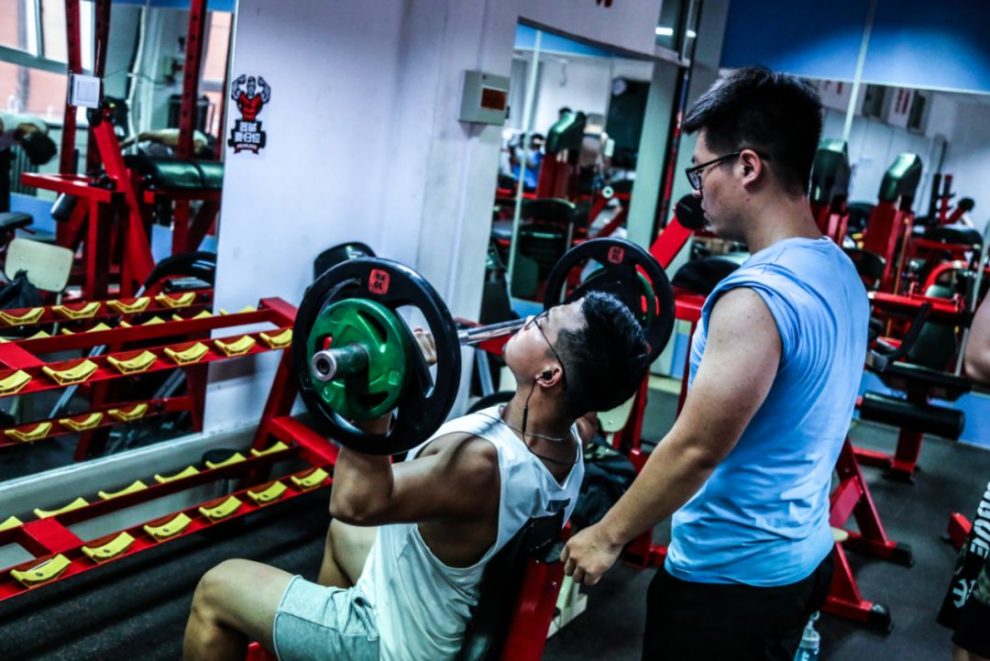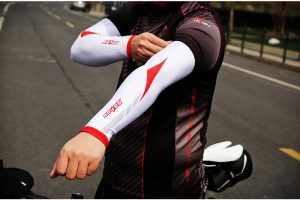In the ever-evolving landscape of fitness, High-Intensity Interval Training (HIIT) has emerged as a game-changer for those seeking quick and efficient fat loss. This revolutionary training method offers a potent combination of short, intense bursts of exercise followed by brief recovery periods. Over the course of this comprehensive article, we will delve deep into the world of HIIT, exploring its effectiveness, benefits, diverse approaches, and safety considerations to empower you on your fat-burning journey.
The Essence of HIIT: A Paradigm Shift in Fitness
High-Intensity Interval Training, or HIIT, represents a paradigm shift in the fitness industry. It diverges from the conventional wisdom that long, steady-state cardio is the most effective path to fat loss. HIIT flips the script, emphasizing intensity and shorter durations, ultimately delivering remarkable results.
The HIIT Principle
HIIT revolves around the concept of short, intense bursts of physical activity alternated with brief recovery or low-intensity periods. These cycles, often known as intervals, create a powerful metabolic effect, leading to enhanced calorie burning, improved fitness, and, crucially, rapid fat loss.
The Science Behind HIIT’s Fat-Burning Prowess
Understanding the science underpinning HIIT’s effectiveness for fat loss is essential to grasp why it stands out as a powerful fitness strategy.
EPOC: The Afterburn Effect
One of the key mechanisms behind HIIT’s fat-burning prowess is Excess Post-Exercise Oxygen Consumption (EPOC). HIIT induces a significant oxygen deficit during intense intervals. To restore normal metabolic processes post-workout, the body expends additional energy, leading to an extended calorie burn even after the exercise session.
Boosting Metabolism
HIIT amplifies your Resting Metabolic Rate (RMR), which refers to the calories burned while at rest. This elevation in metabolism occurs due to increased muscle activation and higher energy expenditure during and after HIIT workouts.
Mobilizing Fat Stores
HIIT stimulates the release of fatty acids from adipose tissue, making them available for energy production. The combination of elevated heart rate and intense effort triggers the body to access fat stores for fuel, supporting the fat-burning process.
HIIT vs. Steady-State Cardio: A Comparative Analysis
To appreciate the efficacy of HIIT for fat loss, it’s vital to compare it with steady-state cardio, the traditional approach.
Caloric Expenditure
Steady-state cardio provides a continuous calorie burn during the activity. However, HIIT’s post-exercise calorie burn, stemming from the EPOC effect, often surpasses that of steady-state cardio, making it more efficient for fat loss.
Time Efficiency
HIIT workouts are considerably shorter than traditional cardio sessions. Achieving fat loss goals through HIIT demands less time, making it a highly attractive option for individuals with busy schedules.
Preserving Lean Muscle Mass
Steady-state cardio, especially when performed for extended durations, may lead to muscle loss. In contrast, HIIT is known for its muscle-preserving properties while promoting fat loss.
Variety and Enjoyment
HIIT’s dynamic nature, with its diverse exercises and interval configurations, often makes it more enjoyable and less monotonous than steady-state cardio. This factor contributes to higher adherence and consistent results.
Variations and Approaches to HIIT
The beauty of HIIT lies in its versatility. HIIT can be tailored to various fitness levels, preferences, and equipment availability.
Tabata: The Classic HIIT Protocol
Named after Dr. Izumi Tabata, this protocol consists of 20 seconds of all-out effort followed by 10 seconds of rest. It’s an intense format that can yield significant fat loss benefits.
The 1:1 Approach
A 1:1 work-to-rest ratio is a common choice for HIIT beginners. It involves 30 seconds of high-intensity exercise alternated with 30 seconds of rest. This approach is both challenging and manageable.
Cardio-Based HIIT
Using exercises like jumping jacks, high knees, or burpees, cardio-based HIIT workouts are designed to elevate the heart rate and maximize fat burning. These workouts often require minimal equipment.
Strength-Oriented HIIT
Combining strength exercises such as squats, push-ups, and kettlebell swings with HIIT principles, strength-oriented HIIT workouts not only torch fat but also build muscle and strength.
Equipment-Enhanced HIIT
HIIT can be taken to the next level with the inclusion of equipment like dumbbells, kettlebells, battle ropes, and resistance bands. These additions intensify the workouts and promote fat loss through increased resistance.
Designing Your HIIT Routine for Fat Loss
Creating a tailored HIIT routine for fat loss requires careful consideration of key factors.
Frequency
Begin with 2-3 HIIT sessions per week and adjust based on your fitness level and recovery capacity.
Work-to-Rest Ratio
Experiment with different work-to-rest ratios to find the one that challenges you while allowing for adequate recovery. For example, a 1:2 ratio provides more rest between intense intervals.
Exercise Selection
Choose exercises that target major muscle groups and are safe for your fitness level. Incorporate variety to keep the workouts engaging.
Progressive Overload
Gradually increase the intensity of your HIIT sessions by adding more intervals, increasing the duration of work intervals, or incorporating more challenging exercises.
Nutrition Support
Proper nutrition is fundamental for fat loss. Ensure your diet supports your fitness goals, emphasizing whole foods, lean proteins, and an appropriate calorie deficit.
Safety Considerations in HIIT
While HIIT is a potent tool for fat loss, it’s essential to practice it safely to avoid injury.
Warm-Up and Cool-Down
Always begin with a dynamic warm-up and conclude with a thorough cool-down to prevent muscle strain and enhance flexibility.
Proper Form
Maintain proper exercise form to minimize the risk of injury. Focus on quality over quantity in your repetitions.
Consult with a Professional
If you have underlying health conditions or are new to exercise, it’s advisable to consult with a fitness professional before embarking on an intense HIIT program.
Listen to Your Body
Pay attention to your body’s signals. If you experience excessive fatigue, dizziness, or pain during a HIIT session, stop and seek medical advice if necessary.
The Psychological Impact of HIIT
HIIT’s effectiveness extends beyond physical benefits; it also positively impacts mental well-being.
Endorphin Release
HIIT triggers the release of endorphins, natural mood enhancers that combat stress and anxiety. This can lead to a more positive outlook and better emotional resilience.
Improved Self-Esteem
As you progress in your HIIT journey and witness tangible results, your self-esteem and self-confidence are likely to receive a significant boost, positively impacting various aspects of your life.
Enhanced Mental Toughness
Enduring the intensity of HIIT sessions enhances mental resilience, instilling a “can-do” attitude that transcends the gym and permeates your daily challenges.
Realizing the Full Potential of HIIT for Fat Loss
In conclusion, High-Intensity Interval Training (HIIT) stands as an exceptionally effective means for rapidly burning fat, transforming not only your physical appearance but also your overall well-being. When harnessed correctly, HIIT can deliver a myriad of benefits that go beyond just fat loss.
Long-Term Sustainability
HIIT’s time-efficient nature makes it sustainable in the long run. With consistent effort and progressive overload, individuals can maintain their fat loss results over time.
Adaptability
One of HIIT’s most appealing attributes is its adaptability to different environments. Whether you prefer working out at the gym, in the comfort of your home, or outdoors, HIIT can be customized to your surroundings.
Community and Accountability
Participating in group HIIT classes or partnering with a workout buddy can foster a sense of community and accountability, further motivating you to stick with your fat loss goals.
Breaking Plateaus
For those who have hit a plateau in their fat loss journey, integrating HIIT can provide the necessary shock to the system, jumpstarting progress once again.
A Holistic Approach
While HIIT primarily focuses on fat loss, its benefits extend to overall health improvement, including increased cardiovascular fitness, muscular strength, and endurance.
Precautions and Considerations
While HIIT offers tremendous advantages, it’s essential to recognize that it may not be suitable for everyone. Consider the following precautions:
Injury Risk
The high-intensity nature of HIIT can pose an injury risk, particularly for individuals with pre-existing joint or musculoskeletal issues. Prioritize proper form and technique.
Individual Fitness Levels
HIIT can be scaled to various fitness levels, but beginners should proceed with caution and gradually build intensity. Consulting with a fitness professional can provide valuable guidance.
Overtraining
Overtraining is a concern in any fitness regimen. Ensure that you allow your body adequate recovery between HIIT sessions to avoid burnout and injuries.
Health Conditions
Individuals with specific health conditions, such as heart problems or hypertension, should consult with a healthcare provider before commencing HIIT. It may be necessary to modify or choose alternative exercise options.
The Road to Fat Loss Success
The journey to fat loss through High-Intensity Interval Training is an exciting one. As you embark on this path, remember that results take time, consistency, and dedication. Here are some final tips to help you on your journey:
Set Clear Goals
Define your fat loss goals and create a detailed plan that includes the frequency and duration of your HIIT sessions, as well as dietary adjustments.
Track Your Progress
Maintain a training log to monitor your improvements. Document your workout times, repetitions, and the intensity of your sessions.
Celebrate Milestones
Acknowledge your achievements, whether they are small or significant. Celebrate your milestones as a source of motivation.
Stay Informed
Continue educating yourself about fitness, nutrition, and wellness. The more you understand, the better equipped you will be to make informed decisions about your fat loss journey.
Stay Consistent
Consistency is the key to success. Stay committed to your HIIT routine, even on days when motivation is lacking.
Rest and Recovery
Do not underestimate the importance of rest and recovery. This is when your body repairs and grows stronger. Adequate sleep and rest days are integral to your progress.
Seek Support
If you find yourself struggling or in need of guidance, do not hesitate to seek support from fitness professionals or like-minded individuals who share your fitness goals.
In conclusion, High-Intensity Interval Training (HIIT) stands as a dynamic and efficient approach to fat loss, delivering swift and enduring results. It is a powerful tool that can transform not only your physique but your overall well-being. By approaching HIIT with the right mindset, informed choices, and attention to safety, you can unleash its full potential and embark on a fulfilling fat loss journey that not only enhances your physical appearance but also your quality of life.





Add Comment